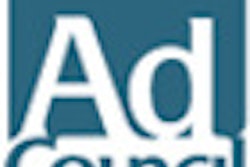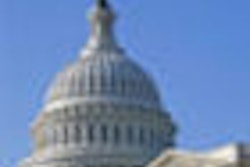
WASHINGTON, DC - The presenters came armed with PowerPoint presentations. Their flow charts and Venn diagrams flashed across the screen, mapping out relationships between behavior, biology, time, environment -- and oral health. The research the speakers described explored such connections, too, on Indian reservations and in inner city neighborhoods, migrant camps, and nursing homes.
The American Association for Dental Research (AADR) fourth fall symposium, held in Washington, DC, on November 3 and 4, was dedicated to taking a macroscopic look at diseases more often studied under a microscope.
The symposium was intended to bring together stakeholders in all aspects of public health dentistry to address the need for the following:
- Oral health behavioral and social intervention research
- Models based on science but used in communities
- Interventions with the power to change the way people care for themselves and their children
- Ways to alleviate the burdens of early childhood caries, periodontal disease, and oral cancers -- maladies that strike hardest at racial minorities and the poor
Taking research "from cells to society, from neurons to neighborhoods" is the new challenge, said Ruth Nowjack-Ramer, PhD, MPH, director of health disparities research at the National Institute of Dental and Craniofacial Research (NIDCR). "The data are important, but it's the people who really matter."
She clicked her PowerPoint presentation and another chart bloomed.
“We need solutions, not just descriptions of the patterns of disparities.”
— Glen Mays, PhD, MPH, University of
Kentucky
"At the center is the individual: individual biology, individual behavior. But we must also understand the social environment and the physical environment, access to quality healthcare, policies, and interventions," Nowjack-Ramer said.
Researching across disciplines such as public health and behavioral sciences needs more attention, she added. "I would encourage all of you to really stretch the kind of research we are doing in this country," she said.
Glen Mays, PhD, MPH, a professor of public health services and systems research at the University of Kentucky College of Public Health, agreed. He said it is time for oral health investigators to press past prevailing boundaries.
"We need solutions, not just descriptions of the patterns of disparities," he said. "The kind of research we are talking about is delivery system research. How do we best deliver the stuff that works?"
Mays brought a diagram too and spoke of a national program he directs at the Robert Wood Johnson Foundation that supports public health practice-based research networks (PBRNs). The networks partner public health agencies with academic researchers to identify questions, design studies, perform research, and quickly translate findings into practice.
Currently, PBRNs across the U.S. are enabling researchers to study and compare the effectiveness of public health strategies in real-world settings and "speed up that 15-year discovery-to-delivery model," Mays explained.
Good science is essential
Some came to the conference hoping to win grants or federal support for their studies. Endowments and loan repayment plans to encourage minority scholarship are available through the National Institutes of Health (NIH), said Joyce Hunter, PhD, deputy director of the National Institute on Minority Health and Health Disparities.
But the cost of oral health research is rising, and the NIDCR's budget is facing uncertainty as Congress battles over the deficit.
"We are down to $409 million, and we really are in a continuing resolution [Congress has not yet passed a final budget]," said NIDCR Director Martha Somerman, DDS, PhD. "The best we can hope for is flat."
Still, good science is essential, she said. Fortunately, U.S. investigators -- many with the help of NIH funding -- are pressing on with their work, using their understanding of disparities to develop evidence-based and sustainable programs to address them.
The successful behavioral and social interventions are intimately informed by the communities they are designed to serve, said David Clark, DrPH, of the NIDCR's behavioral and social sciences research branch.
"You know the communities you are working with. You know a lot of the levers you push for change," he said.
At the Boston-based Center for Research to Evaluate and Eliminate Dental Disparities (CREEDD), university investigators have partnered with the Boston Housing Authority to evaluate the effectiveness of a community-based approach to preventing early childhood caries. The intervention includes oral health assessment, fluoride varnish application, and a technique called motivational interviewing to determine if such a program can reduce early childhood caries and behavioral risk factors that contribute to them.
"We do believe by doing good science we are building the knowledge base," said Northeast CREED Director Raul Garcia, DMD, who is also a professor of health policy and health services research at the Boston University Henry M. Goldman School of Dental Medicine. "It is not somebody else's responsibility to take science into action. We all need to have a role."
Meeting the disease burden
Researchers at the University of California, San Francisco (UCSF) Center to Address Disparities in Children's Oral Health (CAN DO), are working within poor and immigrant communities to address the high prevalence of early childhood caries, said CAN DO Associate Director Stuart Gansky, DrPH.
The center is investigating prevention protocols and using research findings to explore how to identify and reach populations of underserved children, including those who lack dental sealants.
“We need to get out of our silos and onto a wider playing field.”
— David M. Williams, BDS, PhD, Barts
and the London School of Medicine
and Dentistry
"Schools with high levels of English-language learners had less uptake of sealants," Gansky said. "With English-language learners, we need to communicate better so parents learn the importance of sealants."
At the University of Colorado Center for Native Oral Health Research (CNOHR), investigators working on tribal reservations are adapting and testing a dental disease prevention program for the mothers of newborns. They are also researching a dental service delivery model using community workers to administer fluoride varnish and conduct oral health education at tribal Head Start programs.
As in many other poor and isolated places, oral disease is rampant. On some tribal lands, "decay rates may be some of the highest in the world," said Judith Albino, PhD, principal investigator at CNOHR.
The burdens of disease and history can be daunting, but the work of helping is wonderful, she said.
"It is a journey, not a destination," Albino said. "But it is a journey very rewarding to take."
The challenges reach far beyond the U.S. Around the world, research is charting the connections between oral health disparities and socioeconomic factors.
"The lower a person's social position, the poorer the oral health," concluded the symposium's last speaker, David M. Williams, BDS, PhD, a professor of global oral health at Barts and the London School of Medicine and Dentistry. "There is very clear evidence that caries and periodontal disease do follow the social determinants model."
He pictured the flow of life as a stream, with the causes of disease far up near the beginning and the need for care far down.
"We need to shift from downstream victim blaming," Dr. Williams said. "We need to think about upstream, effective prevention."
Disease and disparity persists due to a failure to use what is known about prevention, he added. Dentists alone, treating patients in dental offices, will never meet the needs.
"There is no way that kind of model will meet the disease burden," Dr. Williams predicted.
He spoke of a larger vision, laid out by the International Association for Dental Research Global Oral Health Inequalities Research Agenda initiative, designed to address oral health disparities worldwide. He appealed to oral health professionals to think much bigger.
"We need to get out of our silos and onto a wider playing field," Dr. Williams said.



















